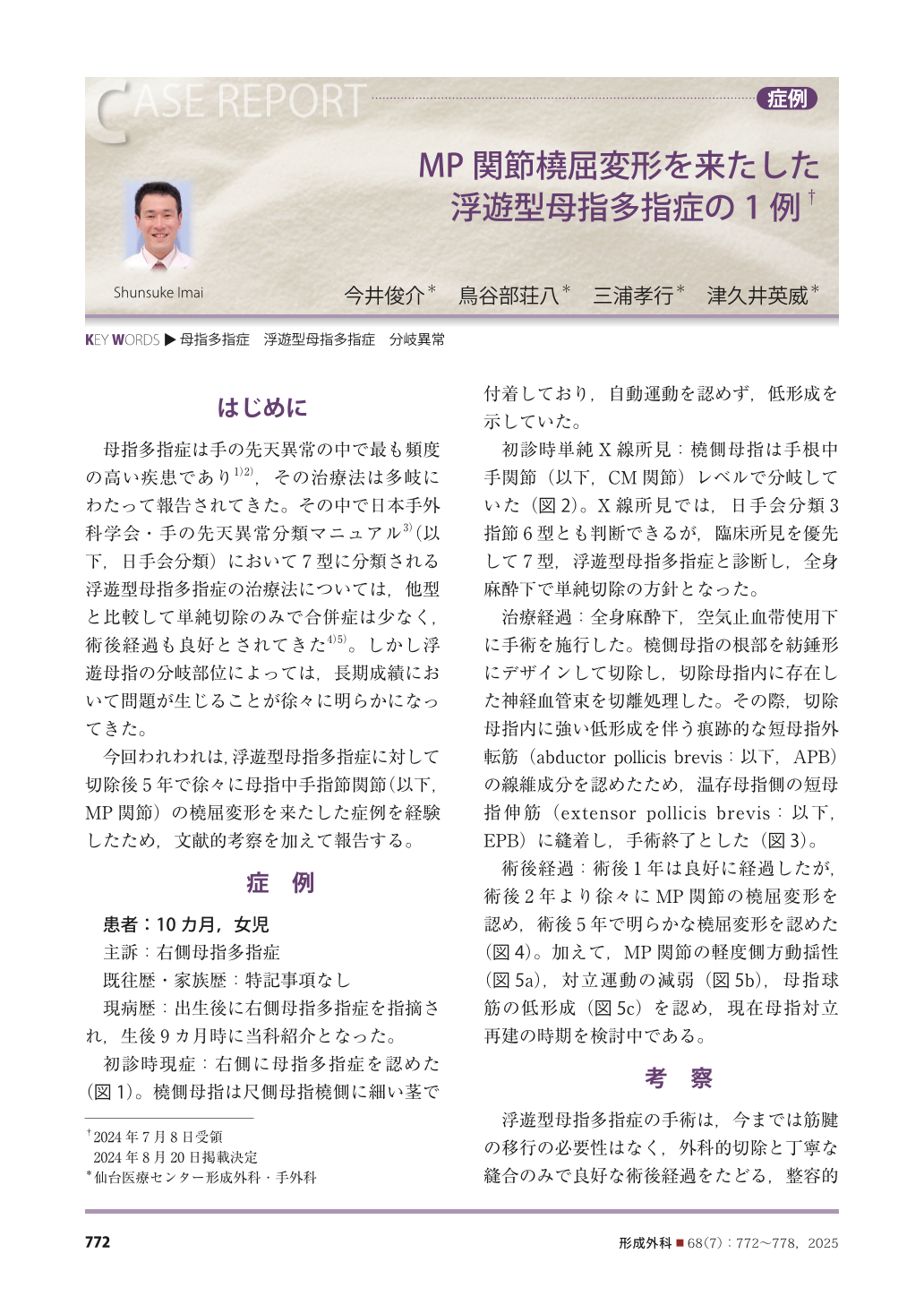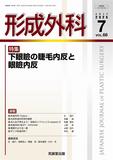Japanese
English
- 有料閲覧
- Abstract 文献概要
- 1ページ目 Look Inside
- 参考文献 Reference
はじめに
母指多指症は手の先天異常の中で最も頻度の高い疾患であり 1)2),その治療法は多岐にわたって報告されてきた。その中で日本手外科学会・手の先天異常分類マニュアル 3)(以下,日手会分類)において7型に分類される浮遊型母指多指症の治療法については,他型と比較して単純切除のみで合併症は少なく,術後経過も良好とされてきた 4)5)。しかし浮遊母指の分岐部位によっては,長期成績において問題が生じることが徐々に明らかになってきた。
今回われわれは,浮遊型母指多指症に対して切除後5年で徐々に母指中手指節関節(以下,MP関節)の橈屈変形を来たした症例を経験したため,文献的考察を加えて報告する。
We present a case study of floating-type radial polydactyly with radial deviation at the metacarpophalangeal joint (MPJ) that occurred 5 years after the initial surgery in 10-month-old girl. This type of polydactyly has traditionally been thought to have a favorable postoperative course with simple resection. However, advances in the three-dimensional ultrasound analysis of the thenar muscles have shed light on a previously overlooked correlation between the level of the bifurcation of the radial thumb and the formation of thenar muscles. Hypoplasia of the thenar muscles, particularly the abductor pollicis brevis (APB), has been identified as a factor contributing to the adduction of the first metacarpal bone and the loosening of the ulnar collateral ligament and subsequent radial deviation at the MPJ.
This patientʼs case underscores the importance of proper APB transfer during the initial surgery to ensure the mitigation of radial deviation in floating-type radial polydactyly, too. Specifically, suturing the APB on the ulnar side rather than the radial side of the basal phalanx has shown promise in preventing postoperative radial deviation. Despite the historical neglect of treatment for floating-type radial polydactyly, our findings highlight the necessity of understanding and addressing the implications of the level of bifurcation of the radial thumb in order to optimize surgical outcomes in these cases.

Copyright© 2025 KOKUSEIDO CO., LTD. All Rights Reserved.


